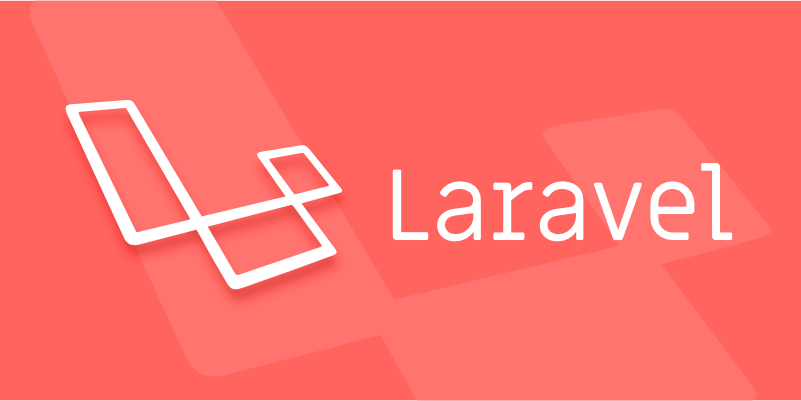Laravel Sanctum is a lightweight API certification system suitable for front-end and back-end separation projects. 1. The installation requires Laravel 7.x or above. Install and publish configuration files and migration files through Composer. Run the migration and configure the domain name and stateful settings as needed. 2. User login can generate a simple token or a personalized token with permissions, and use the createToken method to get the plainTextToken and return it to the front end. 3. To protect API routes, you need to add the auth:sanctum middleware and manually call the tokenCan method to verify permissions. 4. Delete the current or all tokens when logging out, and the front-end needs to clear the saved tokens.

Laravel Sanctum is a lightweight authentication system that is especially suitable for building API authentication. It is not as complicated as Passport and does not require a full OAuth process. It is very suitable for projects that are separated from front and back ends, such as Vue, React or mobile applications.

Here are some key steps and precautions to help you quickly set up Laravel Sanctum's API certification.

1. Installation and basic configuration
First make sure you have created a Laravel project and the version is 7.x or above (the latest stable version is recommended).
Install Sanctum:

composer requires laravel/sanctum
Publish configuration files and migrate files:
php artisan vendor:publish --provider="Laravel\Sanctum\SanctumServiceProvider"
Run the migration:
php artisan migrate
If you plan to use Sanctum to do SPA login (such as Vue front-end), you also need to set the allowed domain name in
config/sanctum.phpand enable thestatefulsettings.
2. User login and generate tokens
Sanctum supports two token modes: simple token and revocable personalized token .
If you just want to make a simple login interface, you can generate a token like this:
use Illuminate\Support\Facades\Auth; $user = Auth::user(); $token = $user->createToken('auth_token')->plainTextToken;
Return this token to the front-end, and then bring Authorization: Bearer {token} for each request.
If you want to support revoke tokens or generate different permissions tokens for different devices, you can use:
$token = $user->createToken('Mobile App', ['read', 'write']);
Then get the value through $token->plainTextToken .
3. Protect your API routing
In routes/api.php , use auth:sanctum middleware to protect the route:
Route::middleware('auth:sanctum')->get('/user', function (Request $request) {
return $request->user();
}); Note: By default, Sanctum does not check whether token has specific permissions unless you manually call $request->user()->tokenCan('read') to determine.
4. Log out with Token
Log out of the token of the current user:
$request->user()->currentAccessToken()->delete();
If you want to log out all tokens at once:
$request->user()->tokens()->delete();
These operations are simple, but what is easy to ignore is that you need to clear the saved token on the front end, otherwise you will still bring the old token with the next request.
Basically that's it. The design goal of Sanctum is to be simple and direct, without complex configurations to complete API authentication. As long as you pay attention to the middleware and token creation and destruction points, you will basically not get into pitfalls.
The above is the detailed content of Setting up API Authentication with Laravel Sanctum?. For more information, please follow other related articles on the PHP Chinese website!

Hot AI Tools

Undress AI Tool
Undress images for free

Undresser.AI Undress
AI-powered app for creating realistic nude photos

AI Clothes Remover
Online AI tool for removing clothes from photos.

Clothoff.io
AI clothes remover

Video Face Swap
Swap faces in any video effortlessly with our completely free AI face swap tool!

Hot Article

Hot Tools

Notepad++7.3.1
Easy-to-use and free code editor

SublimeText3 Chinese version
Chinese version, very easy to use

Zend Studio 13.0.1
Powerful PHP integrated development environment

Dreamweaver CS6
Visual web development tools

SublimeText3 Mac version
God-level code editing software (SublimeText3)
 Working with pivot tables in Laravel Many-to-Many relationships
Jul 07, 2025 am 01:06 AM
Working with pivot tables in Laravel Many-to-Many relationships
Jul 07, 2025 am 01:06 AM
ToworkeffectivelywithpivottablesinLaravel,firstaccesspivotdatausingwithPivot()orwithTimestamps(),thenupdateentrieswithupdateExistingPivot(),managerelationshipsviadetach()andsync(),andusecustompivotmodelswhenneeded.1.UsewithPivot()toincludespecificcol
 Sending different types of notifications with Laravel
Jul 06, 2025 am 12:52 AM
Sending different types of notifications with Laravel
Jul 06, 2025 am 12:52 AM
Laravelprovidesacleanandflexiblewaytosendnotificationsviamultiplechannelslikeemail,SMS,in-appalerts,andpushnotifications.Youdefinenotificationchannelsinthevia()methodofanotificationclass,andimplementspecificmethodsliketoMail(),toDatabase(),ortoVonage
 Understanding Dependency Injection in Laravel?
Jul 05, 2025 am 02:01 AM
Understanding Dependency Injection in Laravel?
Jul 05, 2025 am 02:01 AM
Dependency injection automatically handles class dependencies through service containers in Laravel without manual new objects. Its core is constructor injection and method injection, such as automatically passing in the Request instance in the controller. Laravel parses dependencies through type prompts and recursively creates the required objects. The binding interface and implementation can be used by the service provider to use the bind method, or singleton to bind a singleton. When using it, you need to ensure type prompts, avoid constructor complications, use context bindings with caution, and understand automatic parsing rules. Mastering these can improve code flexibility and maintenance.
 Strategies for optimizing Laravel application performance
Jul 09, 2025 am 03:00 AM
Strategies for optimizing Laravel application performance
Jul 09, 2025 am 03:00 AM
Laravel performance optimization can improve application efficiency through four core directions. 1. Use the cache mechanism to reduce duplicate queries, store infrequently changing data through Cache::remember() and other methods to reduce database access frequency; 2. Optimize database from the model to query statements, avoid N 1 queries, specifying field queries, adding indexes, paging processing and reading and writing separation, and reduce bottlenecks; 3. Use time-consuming operations such as email sending and file exporting to queue asynchronous processing, use Supervisor to manage workers and set up retry mechanisms; 4. Use middleware and service providers reasonably to avoid complex logic and unnecessary initialization code, and delay loading of services to improve startup efficiency.
 Managing database state for testing in Laravel
Jul 13, 2025 am 03:08 AM
Managing database state for testing in Laravel
Jul 13, 2025 am 03:08 AM
Methods to manage database state in Laravel tests include using RefreshDatabase, selective seeding of data, careful use of transactions, and manual cleaning if necessary. 1. Use RefreshDatabasetrait to automatically migrate the database structure to ensure that each test is based on a clean database; 2. Use specific seeds to fill the necessary data and generate dynamic data in combination with the model factory; 3. Use DatabaseTransactionstrait to roll back the test changes, but pay attention to its limitations; 4. Manually truncate the table or reseed the database when it cannot be automatically cleaned. These methods are flexibly selected according to the type of test and environment to ensure the reliability and efficiency of the test.
 Choosing between Laravel Sanctum and Passport for API authentication
Jul 14, 2025 am 02:35 AM
Choosing between Laravel Sanctum and Passport for API authentication
Jul 14, 2025 am 02:35 AM
LaravelSanctum is suitable for simple, lightweight API certifications such as SPA or mobile applications, while Passport is suitable for scenarios where full OAuth2 functionality is required. 1. Sanctum provides token-based authentication, suitable for first-party clients; 2. Passport supports complex processes such as authorization codes and client credentials, suitable for third-party developers to access; 3. Sanctum installation and configuration are simpler and maintenance costs are low; 4. Passport functions are comprehensive but configuration is complex, suitable for platforms that require fine permission control. When selecting, you should determine whether the OAuth2 feature is required based on the project requirements.
 Implementing Database Transactions in Laravel?
Jul 08, 2025 am 01:02 AM
Implementing Database Transactions in Laravel?
Jul 08, 2025 am 01:02 AM
Laravel simplifies database transaction processing with built-in support. 1. Use the DB::transaction() method to automatically commit or rollback operations to ensure data integrity; 2. Support nested transactions and implement them through savepoints, but it is usually recommended to use a single transaction wrapper to avoid complexity; 3. Provide manual control methods such as beginTransaction(), commit() and rollBack(), suitable for scenarios that require more flexible processing; 4. Best practices include keeping transactions short, only using them when necessary, testing failures, and recording rollback information. Rationally choosing transaction management methods can help improve application reliability and performance.
 Handling HTTP Requests and Responses in Laravel.
Jul 16, 2025 am 03:21 AM
Handling HTTP Requests and Responses in Laravel.
Jul 16, 2025 am 03:21 AM
The core of handling HTTP requests and responses in Laravel is to master the acquisition of request data, response return and file upload. 1. When receiving request data, you can inject the Request instance through type prompts and use input() or magic methods to obtain fields, and combine validate() or form request classes for verification; 2. Return response supports strings, views, JSON, responses with status codes and headers and redirect operations; 3. When processing file uploads, you need to use the file() method and store() to store files. Before uploading, you should verify the file type and size, and the storage path can be saved to the database.






